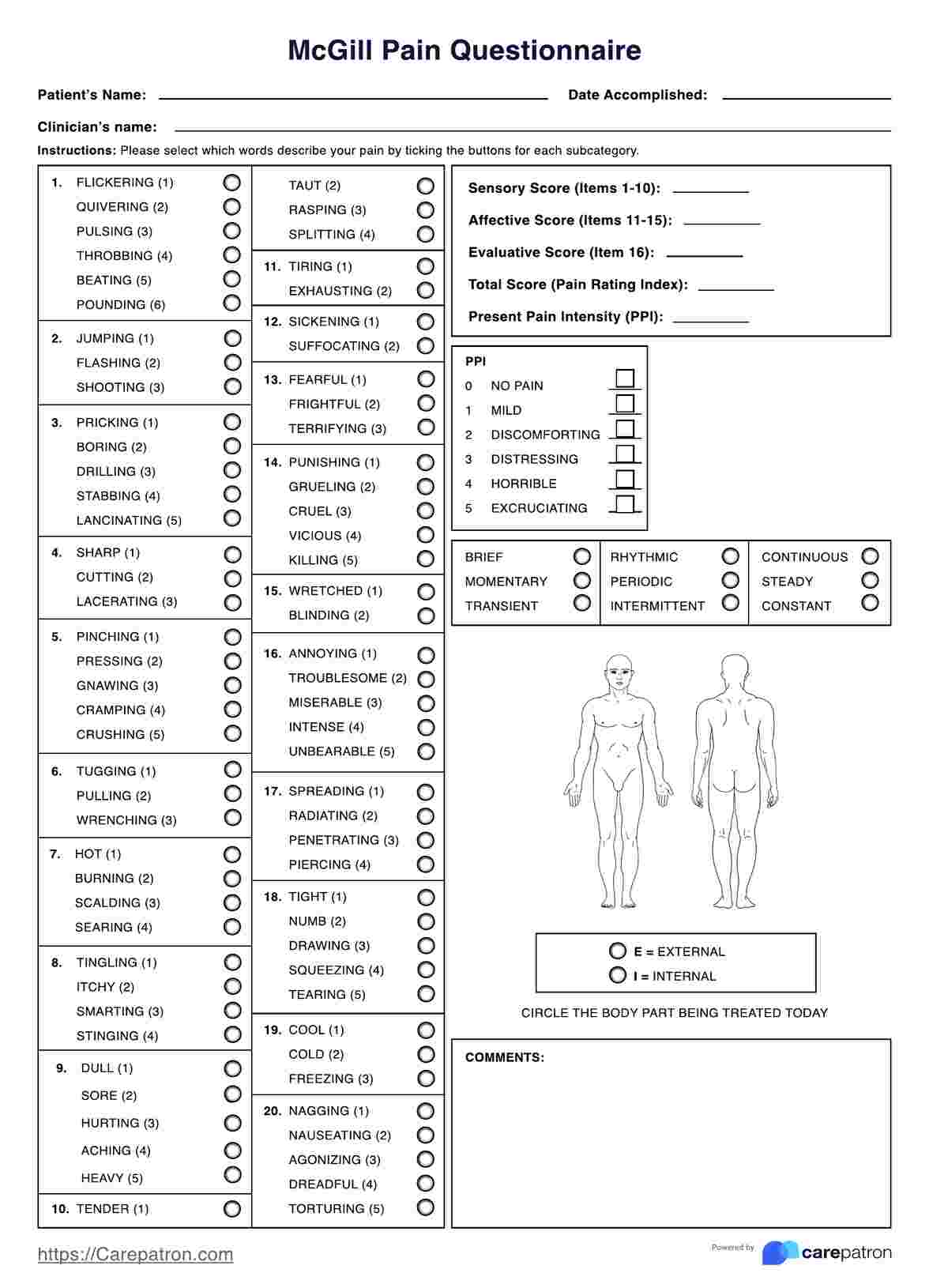It depends on the person answering it. It may take ten to fifteen minutes. Give your patient the time to process how they feel and perceive their pain. If you're conducting this test like an interview, it'll likely take longer than 15 minutes.

McGill Pain Scale
Hand your patient the McGill Pain Scale so they can rate themselves based on how they are feeling and how they view the pain they’re experiencing.
McGill Pain Scale Template
Commonly asked questions
Yes, because it covers more bases than a regular pain scale. But it also has its limitations. While it can give a good overview of the patient’s perception of their pain, it doesn’t pinpoint the cause if you’re using it during the initial stages of patient care. It’s best to conduct other tests based on the results of the pain scale so you can determine the cause and how you can treat it.
Yes. It can be used for back pain, chronic pain, post-operative pain, or any other type of pain. Since it covers affective and evaluative dimensions of pain, it can even be used by psychologists. But it would be best to also use specific scales for specific types of pain to get consistent results.
EHR and practice management software
Get started for free
*No credit card required
Free
$0/usd
Unlimited clients
Telehealth
1GB of storage
Client portal text
Automated billing and online payments











